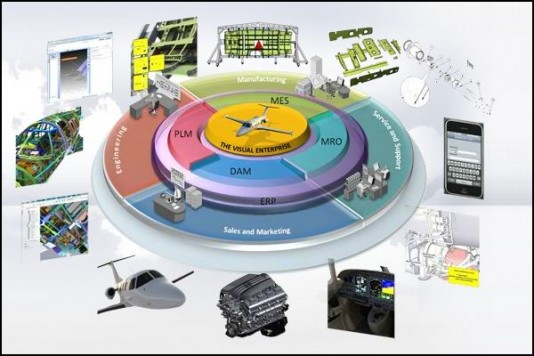The two have been technology partners for years; what took SAP so long to bring 3D to the enterprise?
Business software powerhouse SAP has agreed to acquired Right Hemisphere, a boutique provider of visualization software for product development. Right Hemisphere has been an SAP technology partner for several years. Terms were not disclosed.

SAP said the acquisition is “consistent with SAP’s strategy to complement existing applications and solutions with innovative technologies and capabilities while maintaining its successful track record of organic growth.” The announcement noted that SAP and Right Hemisphere have many joint customers who use Right Hemisphere’s visualization tools in their SAP deployments. SAP lauds the value of 3D in the enterprise, and says the acquisition will help customers “improve information quality and processes.” SAP also claims the acquisition will open the door to “New solutions [which will] increase the speed of decision-making across all lines of business.”
SAP is so large, and Right Hemisphere so small, that we expect the acquisition will have no impact on earnings.
Right Hemisphere CEO Michael Lynch says the combination will bring design data to the forefront. “[This union] will help drive SAP to the center of product and asset information. One of the benefits for customers will be the integration of data from CAD, which has traditionally been proprietary, and business processes held in SAP. This will enable customers to improve speed, productivity as well as overall user experience. We’re heading towards the next step in driving innovation, what we’re calling the visual enterprise.”
Most of the RH team, including CEO Michael Lynch, will be staying on.
Late is better than never
There are five major names in PLM (excluding newcomer Autodesk). Ranked by the number of PLM-specific customers, they are Siemens PLM, Dassault Systèmes, PTC, Oracle, and SAP. Oracle and SAP dwarf the other three in total size (based on either revenue or market share), but when it comes to thought leadership in PLM Oracle and SAP are followers, not leaders. This acquisition will do nothing to change SAP’s rankings.
In 2007 SAP published a four-year road map explaining its plans for growth in PLM (you can read about it in the GraphicSpeak archives: “2007: SAP PLM Road Map: High-Speed Rail Line or Head-On Train Wreck.”) According to the SAP road map, they should have closed the deal with RH or made a similar move around 2009. At that time, we noted SAP had been the butt of many jokes in the industry because of failed PLM implementations, and wondered if a company whose idea of “the single source of truth” is based in operations and accounting instead of product development can really create a quality product-centric PLM product. We still wonder that today.

Right Hemisphere, on the other hand, creates a quality product; its design visualization tools are as good as any. The problem is, there are so many quality products out there; market consolidation is inevitable. Lynch and his team (and let’s not forget the venture capital behind them) were smart to accept a buyout from their long-term partner and forgo trying to maintain an independent presence in this economy. Let the vast SAP sales force take responsibility for it now.
This acquisition is a nice benefit for SAP’s existing customers, the same way the acquisition of Agile PLM with its AutoVue visualization was for Oracle. Buying Agile did not increase Oracle’s footprint in PLM, and this new deal comes years too late to help SAP increase its PLM-specific market share.





